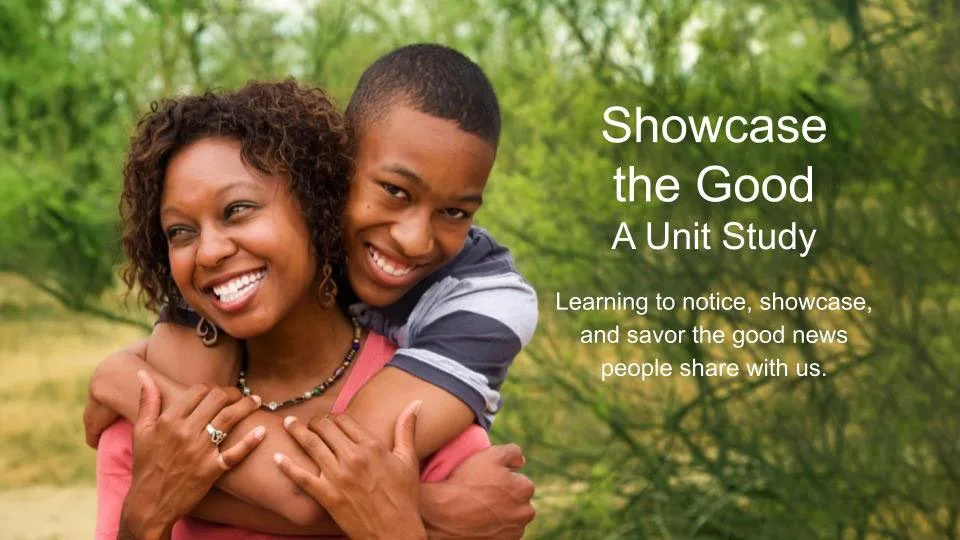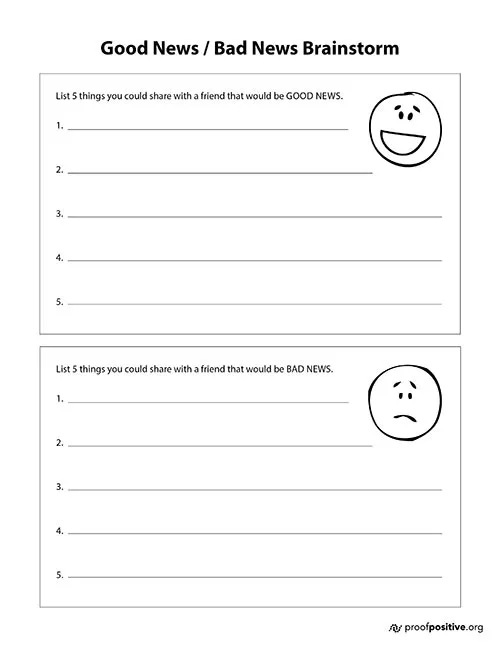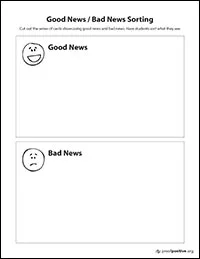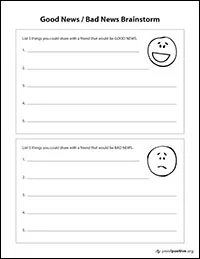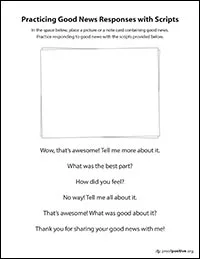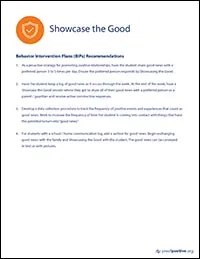TEACH Showcase the Good
Explore the intersection of positive psychology and autism intervention by teaching your students how to Showcase the Good!
Start Teaching!
This comprehensive bundle comes with everything you need to bring Showcase the Good into the classroom, from teaching slides and notes to supplementary resources.
Quick Link Library
10 Minutes
Good News / Bad News Brainstorm
10 Minutes
Responding to Good News Role Play
25 Minutes
Behavioral Intervention Plan Recommendations
15 Minutes
15 Minutes
Integration Into Curriculum Instruction
15 Minutes
Expanded Teaching Resources
Lesson Plans & Teaching Materials
- Objectives (PDF)
- Teaching Slides — All Activities (Google Slides)
- Teacher’s Guide (Google Slides, PDF)
- Teacher Answer Key (PDF)
- Unit Study Bundle Pack — All Activities (PDF)
Behavior Intervention Plans (BIPs) are more than just behavior supports – they’re pathways to learning and success. By prioritizing wellbeing and happiness in BIPs, you can help create structure and consistency while also making space for joy, connection and resilience. With the right supports in place, students can feel empowered, successful and experience more happiness at school.
- As a proactive strategy for promoting positive relationships, have the student share good news with a preferred person 3 to 5 times per day. Ensure the preferred person responds by Showcasing the Good.
- Have the student keep a log of good news as it occurs through the week. At the end of the week, have a Showcase the Good session where they get to share all of their good news with a preferred person or a parent / guardian and receive active constructive responses.
- Develop a data collection procedure to track the frequency of positive events and experiences that count as good news. Work to increase the frequency of time the student is coming into contact with things that have the potential to turn into “good news.”
- For students with a school / home communication log, add a section for good news. Begin exchanging good news with the family and Showcasing the Good with the student. The good news can be conveyed in text or with pictures.
Individualized Education Plans (IEPs) ensure every student has access to the supports they need to thrive. When happiness and wellbeing is included and prioritized in IEPs, students are more likely to flourish in learning and in life. By shifting from a deficit-based approach to one of strengths and potential, IEPs can open doors to learning, connection and joy – at school and beyond.
- [Student Name] can [verbally/non-verbally] Share the Good moments in their life ___ out of 5 times,
when [prompted or unprompted.
Example: Allen can verbally Share the Good moments in his life 3 out of 5 times when prompted
by a teacher or staff member.
- [Student Name] is authentically engaged through body language, commenting, question-asking, or other prosocial communication strategies with another student or staff member when they are Sharing the Good moments in their life ___ out of 5 times with _________ support.
Example: Palmer is authentically engaged through body language, commenting, question-asking, or other prosocial communication strategies with another student or staff member when they are Sharing the Good moments of their life 4 out of 5 times with one verbal prompt.
- [Student name] can [verbally/ nonverbally] create and respond with an Active Constructive Response ____ out of 5 times with ________ support.
Example: Jessica can verbally respond to a peer or staff member with an Active Constructive
Response 2 out of 5 times with moderate to maximum prompting and support.
- [Student Name] can identify the difference between an Active Constructive Response and a
(Active Destructive Response, Passive Constructive, or Passive Destructive) with _______% success with __________ levels of support.
Example: Cody can identify the difference between an Active Constructive Response and a Passive
Constructive Response with 90% success and minimal prompting and support.
- [Student Name] can identify [an appropriate coping strategy], after engaging with a (Active Destructive Response, Passive Constructive, or Passive Destructive) _______% of the time.
Example: Darci can identify the need to deep breathe, after engaging with an Active Destructive
Response 75% of the time, with minimal prompting and support.
Bringing wellbeing to the forefront doesn’t require a complete overhaul of your classroom routine. By integrating happiness skills into what you’re already teaching, you can help students learn and practice happiness in simple, meaningful ways. From morning meetings and check-ins to reading, writing, and relationship-building, there are countless ways to make wellbeing part of everyday learning.
- For students who participate in a Morning Meeting or have Brain Breaks throughout the day,
have students Showcase the Good by sharing good news with a partner and practicing an Active Constructive Response back during this timeframe. - Designate a space in your classroom for students to pair up and share good news. They can enter this spot in the room with their partner and engage in Showcasing the Good. The student can share their good news to their partner, and their partner can respond with an Active Constructive Response.
- When your classroom travels to an activity through the hallways (example: to lunch, to a special, to dismissal at the end of the day), break your line into two and allow the students to walk and talk with a partner about recent good news. One partner shares their good news first, while the other responds with an Active Constructive Response — then switch turns.
Classroom Activities
Each activity includes teacher notes and differentiated instruction across skill levels
- Activity 1: What is Good News?
30-45 Minutes / Google Slides + Teacher Notes / Student Worksheets (PDF) - Activity 2: Introduction to Good News Response Styles
20-30 Minutes / Google Slides + Teacher Notes - Activity 3: Name that Response Style
10-15 Minutes / Google Slides + Teacher Notes - Activity 4: Role Play Responding to Good News
20-30 Minutes / Google Slides + Teacher Notes / Student Worksheets (PDF) - Activity 5: Showcase the Good Everyday
10-15 Minutes / Google Slides + Teacher Notes - Unit Study Bundle Pack — All Activities (PDF)

